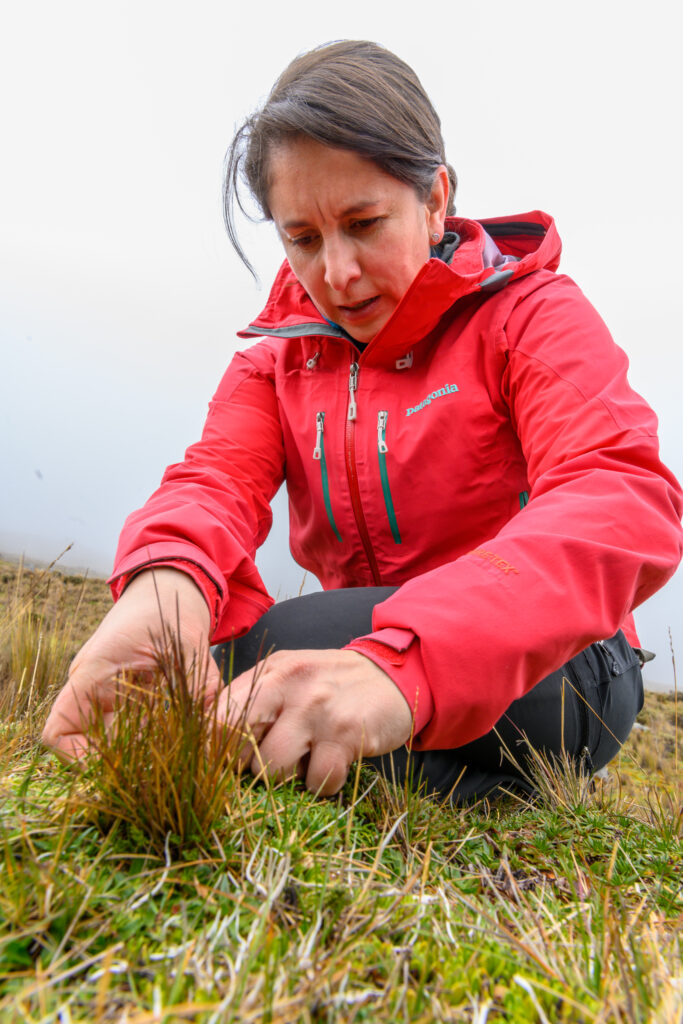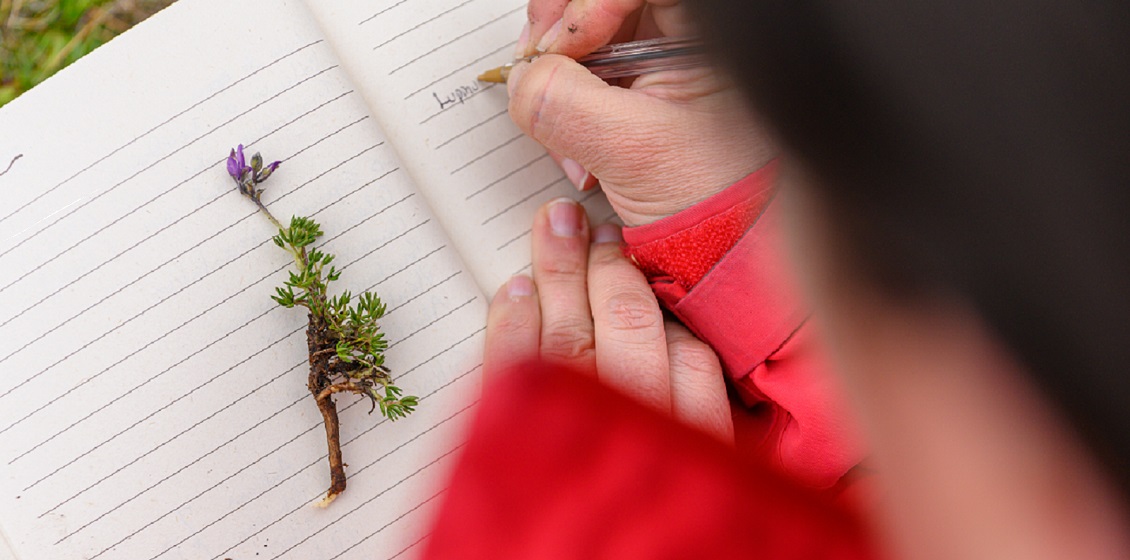Meet the Ecuadorian scientist who defied machismo-culture in the academic world in Ecuador, to study thoroughly a big passion for her – climate change and its effects on her native mountain region and in the end the water supply in the country.
The impressive glacier of Antisana (5.758 meters) rests just above the temperature chambers, that represents some of the climate change field study-work for Priscilla Muriel (44), Associate Professor at Pontificia Universidad Católica del Ecuador. In this remote mountain region, in the national park around the volcano Antisana, Priscilla and her colleagues study how rising temperatures affects the highland ecosystem in the Andes – on the soil, the plants and as a community of plants.
The site is one of the so-called Gloria sites in Ecuador, which are also found around the volcanos El Altar and Pichincha. In total there are 21 Gloria-spots in Latin America from Venezuela to Argentina, and they are part of the global observation research initiative in alpine environments.
The Ecuadorian biologist got her Ph.D. in Biology at Aarhus University with support from the ENRECA program. She forms part of a group of female scientists at her university in Ecuador.
Even though she belongs to the younger parts of the scientists, as a woman she has had many challenges related to her sex.
“You’re here at the university just to find a husband, a professor told me once – as all the other women,” remembers Priscilla with a serious smile.
She tells how the first years of her career she spent behind the desk more doing a kind of analyzing others field work. “It was my perception and I was suggested to do deskwork – because field studies were not for women,” Priscilla explains.
Her personal fight and experiences have also made Priscilla passionate about supporting other women in science. “Otherwise imagine all the knowledge that gets lost. And all those female scientists not being able to realize important work,” states Priscilla.
Back at Antisana national park at high above sea level and with a humid and cold climate, the scientist is showing some boxes 2×2 meters that simulates how 2 degrees warming would affect the environment.
“When the temperature rises, some of the original plants from the páramo ecosystem die out and make space for species from lower altitudes, even for invasive species. And these are a lot stronger and more aggressive. In general, those ones outcompete the native plants. In Ecuador this phenomenon hasn’t really been studied, we are still in diapers. But from other parts of the world we know, that in those small niches, open spaces, if there is an invasive plant, the probability that a native plant will germinate, is very low. Then in some years, you will find a community of plants that doesn’t look like the original one at all. And the ecosystem will not have the same features that allow CO2 capture or water storage – it’s like a snowball”.
Also, when the páramo plants die back and invasive species get in, suddenly you no longer have the same food for animals (pollinators, native herbivores). It’s a problem with some invasive species, that they are not very palatable for animals that eats small plants. Furthermore, you do not have the same resource for insects or birds who live in the here and acts as pollinators or seed dispersers for páramos species for crops further down the mountain.
“The páramo and its community of plants is like a super developed network that we just know a tiny bit about”.
The páramo ecosystems are often referred to as water factories, and important for the supply of drinking water. Antisana is no exception. This particular area is essential to ensure water supplies for the Ecuadorian capital, Quito. “And we don’t understand very well what’s happening here with the rising temperatures and this is really serious,” warns Priscilla.
“That’s what motivates me. The plants of the high Andes – that don’t exist elsewhere. If we don’t act, so that those plants won’t disappear, those species are condemned. Rising temperatures causes the plants to migrate higher up – but those plants can’t any higher here, because they are already near the top of the mountains.”
But as a scientist specialized in climate change, it is also an ever-existing challenge understanding the seriousness of the situation without losing hope or suffering psychological consequences of that knowledge.
“It’s a beautiful work, but very slow and distressing from the point of view that you only have little pieces of a puzzle that you are just starting to discover, and then you have to try to explain what is happening to other people, specially to the decisionmakers. Generally, they do not follow you very well. And they don’t give it the relevance they should,” says Priscilla.
As the global temperature rises the plants that are exclusive for the highlands migrate up the mountain. Those páramo plants have special characteristics, such as the ability of retaining water and therefore have a central role in the clean water “production” in Andean countries such as Ecuador, Colombia etc.
“The problem is that here in the páramos, we have a super delicate balance of plants like cushion-plants and grasslands. In our study sites, what we do is to register everything! From every new plant that has arrived, to the plants we can see have disappeared, because that will give you an idea of how the community has changed and gives you an idea if the community is losing properties such as water retention”.
Priscilla is especially interested in studying climate change effects on the unique plant species in the in the Andean highlands, which urgently requires studies. And in order to get a more integral view of its consequences of climate change on the plants in the high Andes.
As a part of their studies about climate change, Priscilla and her team also register the temperature in the soil every hour. And they have been doing so for six years.
“Here in the Andes you have a lot of people who depend on the mountains for everything. Quito is the clear example with respect to water. Actually, a lot of food that we eat, is cultivated in the highlands. At the crop level, not many studies have been done – there are studies in cocoa, there are studies in potatoes, but basically all the crops from the Andean areas are poorly studied, and eventually they will have problems due to climate change,” explains Priscilla.
Priscilla has a 5 years old daughter. As a parent, it’s also hard to continue with the fieldwork and travels. But at the same time, her daughter’s future motivates Priscilla to keep investigating this important topic:
“I want my daughter to be able to enjoy and visit the same places as I have,” says Priscilla.
Lise Josefsen Hermann is a Danish journalist based in Ecuador


References
![]()
![]()
![]()




